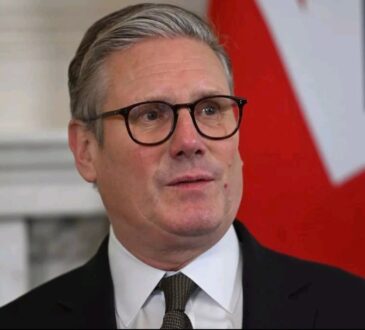
Gbnews presenter Emma Webb has reveals why she the national trust can not be trusted . According to her statements, the Tate Modern’s decision to rearrange its displays led to the removal of important paintings, including Waterhouse’s famous “Lady of Shallot,” all in the name of inclusivity. Meanwhile, the National Trust announced plans to create a policy for giving back colonial artifacts, sparking intense discussions about the consequences of such actions.
People became concerned about the National Trust’s ability to protect the heritage it holds. With over 1,000 items from South and East Asia under its care, including artifacts at Palace Castle in Wales, tensions rose. The focus turned to the Clive family, who are descendants of Clive of India, the first governor of Bengal, and his son Edward, the governor of Madras. Among the disputed items is a part of a Sultan’s Tent taken during a battle.
The Indian government, led by Prime Minister Modi, increased pressure on the National Trust to return these artifacts. However, some doubt the motives behind these demands, suspecting political motivations.
Recent examples of artifact returns added to the debate. A museum in Glasgow returned a 14th-century sword to India in January. The Horniman Museum in South London gave 72 artifacts back to Nigeria, and the Cambridge Museum of Archaeology and Anthropology was allowed to transfer over 100 artifacts to Nigeria. These actions showed a growing trend of museums willingly giving away cultural treasures.
Behind closed doors, concerns grew about some museum curators treating artifacts as if they were their own property. Returning artifacts is a complicated matter, and it challenges the simplified arguments made by those advocating for restitution.
For example, when Germany returned the Benin bronzes to Nigeria, they expected the bronzes to be displayed publicly. However, they ended up with the King of Benin, whose ancestors were slave traders. This complexity shows that the right to repatriation is not always straightforward.
Ownership disputes go beyond the King of Benin, with African-American descendants of slaves even suing the Smithsonian Museum to prevent the return of bronzes to Nigeria. The Koh-i-Noor Diamond, a valuable gem, also raises questions about who has the right to possess it.
Some repatriation efforts have been criticized for being insensitive. Durham University returning a Japanese flag taken during World War II sparked outrage, especially among those who suffered in Japanese prison camps.
These repatriation efforts suggest a one-sided approach that undermines the integrity of museums and limits future generations’ access to diverse cultural heritage.
The central question arises: Should every object be returned to its original location? Critics argue that if artifacts are given back solely based on who demands them the loudest or has the most power, it undermines the study of history and deprives future generations of learning from different cultures.
The National Trust, under scrutiny for its restitution policy, says it will follow the guidance of the Museum’s Association and the Arts Council. They consider factors like the origin of the artifacts, public access, public benefit, and acknowledging past wrongs.
The chairman of the National Trust understands the challenges involved and the need for careful decision-making. However, there is still doubt about the organization’s ability to handle these matters fairly and respectfully.
The ongoing debate about returning colonial artifacts raises important questions about museums’ responsibilities, the complexity of history, and preserving cultural heritage. Striking a balance between acknowledging past injustices and ensuring accessibility and education for future generations is a difficult task that requires careful thought.
As the discussions continue and pressure builds, the fate of these artifacts remains uncertain. The nation stands at a crossroads, where choices made today will shape how cultural heritage is understood and preserved for years to come.




